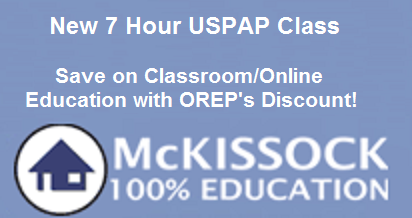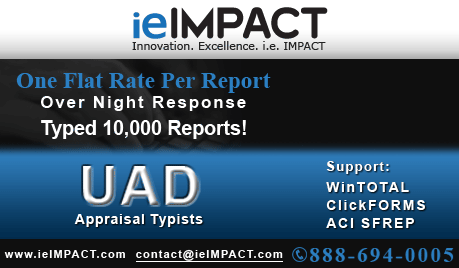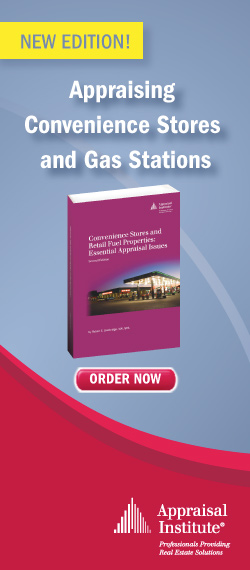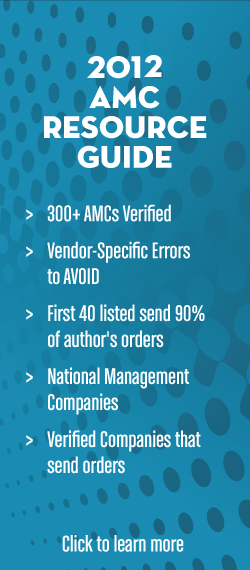
|
Published by OREP, E&O Insurance Experts | Feb. 15, 2012 | Vol. 245 |

|
> Surveys
> Blogs
> Leave Comments Below |
A feasibility study
delineates value to the owner, not value in exchange, and answers the
question: will it pay?
Live
Webinar Tomorrow:
Realities of Appraiser Liability
Editor’s Note:
Veteran appraiser and author Lloyd Manning offers one way to “appraise” outside
the box: feasibility studies.
Diversifying:
Consulting-Feasibility Studies
By Lloyd R. Manning, AACI, FRI,CCRA, Papp
After 30 plus years as a commercial real estate and business appraiser I have found that many appraisers duck assignments they don’t have to. When asked why, many reasons are given, with “we just don’t do that” being the most typical. Few wish to admit they don’t know what they are or how to do them. I have preached for many years about the multitude of business valuation assignments that are ripe for the taking yet lack qualified and capable appraisers, and although no known statistics exist, I would suggest that performing feasibility studies are in equally high demand. So, I ask, “Why not?”
A well-seasoned, experienced commercial real estate appraiser can conduct a feasibility study as well as anyone else. For certain less involved projects residential appraisers are equipped, such as condominiums or apartments or perhaps a land development. There are just a few quirks to be mastered, none that is too difficult or complicated. This article will touch on a few highlights. My recently published book, Winning with Commercial Real Estate, offers a wealth of information for the appraiser, broker and investor, and devotes an entire chapter to this topic (see below).
Feasibility Study
The
principal purpose of a feasibility study is to determine investment value to
an owner-developer and not market value, which as normally considered, is value
to the average buyer or seller. This is
value to a specific
investor or group of investors, based on their individual needs and
requirements. A feasibility study delineates value to the owner, not value in
exchange, and answers the question: will it pay?
As having a preconceived
idea is the starting point, a feasibility study should not be confused with a
highest and best or optimum land-use study, which takes a vacant or
underdeveloped parcel of land and considers all of the uses to which it could be
profitably put. From the wider selection of alternatives, it determines what is
best; what will produce the greatest monetary or societal benefit.
A feasibility study should not be confused with an appraisal. Although many of
the ingredients of a comprehensive real estate appraisal are included,
particularly those relative to supportive data, the feasibility study goes the
next mile. An appraisal seldom includes a recommendation for action, which a
feasibility study does.
A successful real estate project is the result of a melding of the requirements
from three forces/participants.
1. The developer, the one
who will develop the project,
2. The tenants, those who will occupy the project once completed,
3. The community at large, who ensure that the project meets the social and
economic blueprint.
Each of the three is vitally concerned with the viability of the project. No developer wants a loser and no tenant wants to be in a second-class building.
A feasibility study can be undertaken to satisfy one of three requirements:
1. A site in search of a
viable but pre-conceived project. In this instance, the greatest of attention is
paid to the marketing analysis section, the needs and demands of potential
occupants and users.
2. A market in search of a project. In this case, a comprehensive understanding
of the economics, requirements and constraints of all involved parties are
mandatory.
3. An investor in search of a project which, at a minimum, meets the return on investment hurdle rate and management criteria while overcoming the constraints.
There are three distinct sections to a feasibility study:
1. The legal, economic, demographic, demand and competition studies for the suggested project.
2. The conceptual plan that meets with the owner’s objectives and overcomes the constraints, which are formulated from the findings. This would include the cost to develop the project including the developer’s overhead and anticipated profit.
3. Estimation of net income and probable returns, answering the question “Will it pay?”
The investigation and analysis of the present and projected economic environment of the proposed project is required and how it will fit into the community and neighborhood. Only then can you establish current need and long-term potential.
A detailed competitive analysis is an important element in the process. Errors in judgment are most frequently made by underestimating the ability of one’s competitors and, more particularly, their will to survive.
Marketability Study
An important
part of a feasibility study is a marketability study for the proposed project.
Delineated are the probable end users or occupants of the project, answering the
questions: “Is there a demand for this development? Can the developer lease all
of the space created at an equitable rental rate?” For this purpose the
analyst needs to:
1. Estimate the demand for rental space of all types in this area.
2. Estimate the supply of space that is directly competitive to your subject. Include what is presently available or proposed.
3. Determine if additional demand is being created or if the forecast suggests a glut.
4. Determine whether the competitive space is offered at an equitable price and on competitive terms. What are the prevailing rental rates? How much floor space or number of rental units will be needed to satisfy the projected demand?
5. Consider the competition: Detail those that are superior to the proposed project, those that are comparable and those that are inferior
To be feasible:
* Demand for the project must exist.
* The proposed project must
be at least equal to the competition, both present and planned.
* Design and construction must be such that maintenance costs are at a minimum
and durability is long term.
* The economics of the project must be such that it meets with the developer’s objectives and overcomes most of the constraints. It must meet the minimum financial hurdle rate.
* The project must be carefully planned with the cooperation of all municipal and other regulatory bodies.
* Capable property management must be available.
Will it Pay?
The
will it pay? section is a detailed projection of the potential sources of
income and expenses as well as a consideration of returns on investment at
varying levels. The varying levels, known as a “sensitivity analyses,” asks and
answers “what if?” questions over and over. What if occupancy does not reach
the projected levels? What if expenses are higher or lower than projected? What
if the project cost comes in over budget? How is the return on the investment
affected? And so forth.

If your study is from the perspective of a site in search of a market, you would
conduct what is known as top-down market research. This is primarily
textbook-oriented, in that it measures the total market and assumes that all
participants get a fair share. If the objective of the study is “a market in
search of a project,” that is, to fill a definable void or to find the best
return on investment, you would conduct a bottom-up market research. This
procedure looks for possibilities or growth areas that are not now adequately
covered and then steps in to take up the slack.
In undertaking the financial calculations, it is best to look for the project from a bottom-up perspective. For a project to be successful there must be unfilled or latent demand. If the market is at the state of equilibrium, or supply exceeds demand, the developer should either not undertake the development at this time or consider alternatives.
The feasibility study ends with a recommendation for action. This could be:
* Develop the project as conceived, or
* Alter the concept,
* Change the criteria,
* Develop something completely different,
* Do nothing, wait for better times, or
* Forget the whole idea
About the Author
Lloyd R.
Manning, AACI, FRI, CCRA, Papp, is a semi-retired commercial property and
business appraiser and broker with over 30 years’ experience. He is the author
of several real estate and business books and magazine articles. His most recent
book “Winning with Commercial Real Estate” covers the entire field of
Investment, Commercial and Industrial Properties. It provides excellent
background and research material for all appraisers, brokers and investors. Full
details of the book are available online at
Booklocker.com. It can be purchased there, paperback or PDF, or from Barnes
& Noble and Amazon.
ATTENTION: You are receiving WRE Online News because you opted in at WorkingRE.com or purchased E&O insurance from OREP. WRE Online News Edition provides news-oriented content twice a month. The content for WRE Special Offer Editions is provided by paid sponsors. If you no longer wish to receive these emails from Working RE, please use the link found at the bottom of this newsletter to be removed from our mailing list.



